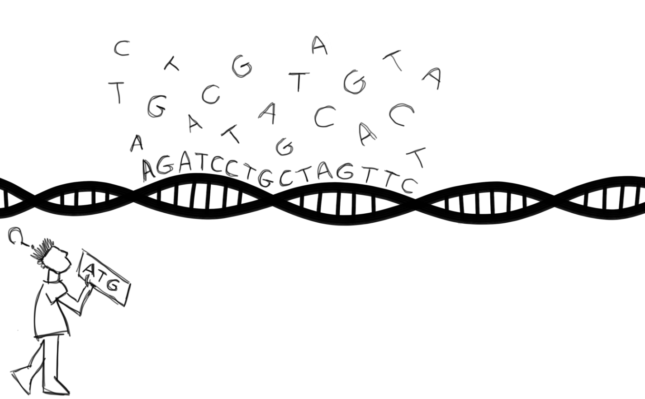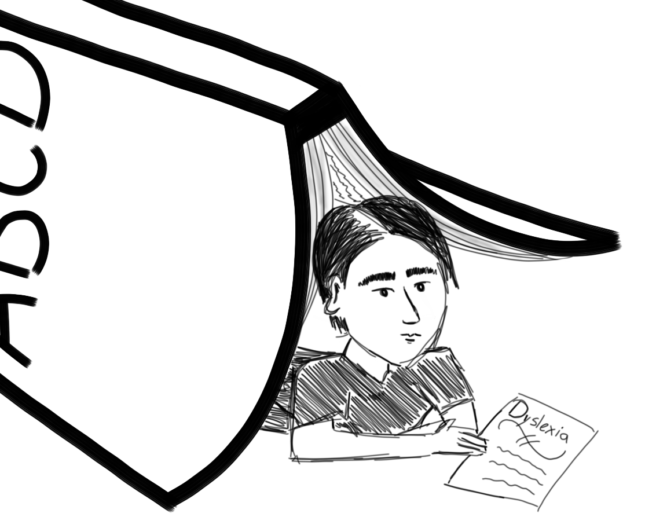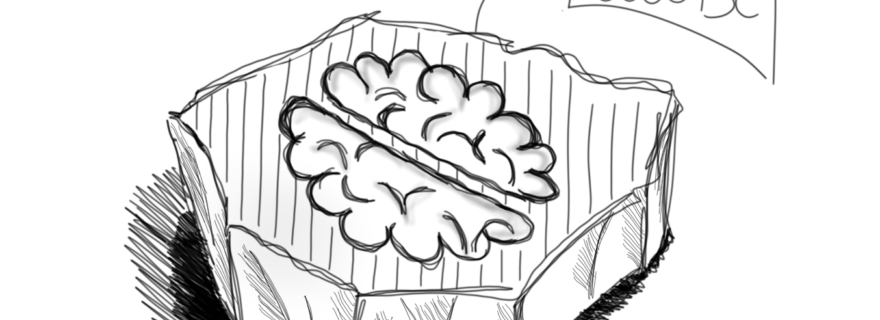The science behind dyslexia
Dyslexia! Word blindness? Or is it reading blindness… Over the past 80 years, many different views and theories have emerged linked to what we now know as dyslexia. From having visual problems to the view that someone is simply stupid to delayed neurological or language development. Research in recent years has given us a good understanding of what dyslexia looks like on the outside, but how it works on the inside is still under extensive investigation. Dive in with me into different fields of study and discover how the theory of dyslexia has evolved over the years.
History of dyslexia
The word dyslexia was first mentioned in the 17th century: it described the loss of language/reading ability caused by brain damage. This is nowadays called "acquired dyslexia" [1]. Developmental dyslexia, what you have from birth, was first described in the early 20th century. It was then thought to be caused mainly by visual, neurological or ophthalmic problems. Dyslexia was investigated mainly by doctors. The theories of American neurologist Samuel T. Orton had a great effect on the general understanding of dyslexia at the time. These described that the mirroring of letters or words, such as b and d or was and saw, was the most striking feature, and that the problem lay in the visual perceptual area. Because of these ideas, word blindness was primarily used instead of dyslexia. It was not until the 1950s that word blindness began to be known within fields such as psychology, sociology, and education. The theories at the time were very different. But it was not until around the 1980s, after the development of innovative fields such as cognitive psychology and neuroscience, that the word dyslexia began to become more familiar, with the updated definition that it is not only a visual problem but rather has linguistic causes. Nowadays, dyslexia is studied in an interdisciplinary way: this is what I want to tell you a little more about.
Dyslexia and genetics
One of the first genetic discoveries is that dyslexia is partially hereditary. When a parent has dyslexia, there is a 30 to 50 percent chance that the child will also suffer from it [2]. In children with normal to good reading parents, this percentage is 3%. Because this percentage is so high in children with dyslexic parents, scientists agree that dyslexia is hereditary. Since heredity has been known, bioinformatics has been used to identify genes that may be involved in having dyslexia. During this process, small mutations in the human genome of dyslexics are compared to that of a control group without dyslexia. The significantly different genes between these groups may be involved in dyslexia, and are then further examined in the lab by biochemists. Nine significant genes have been identified using this system.

One of these genes seems to be very interesting, namely the KIAA0319 gene. This gene has now been studied for 20 years in relation to dyslexia. One of the reasons why this is an interesting gene is because it is mainly expressed in the brain [3]. By turning the gene off in mice, its function can be determined. For example, scientists found that these mice had auditory processing problems, which is also recognized within people with dyslexia [4]. In addition, the protein is involved in axon growth and cell migration (structure formation and interaction of neurons) [5]. Again, this is consistent with human research on the brain structure of dyslexics, where differences can be found in the amount of gray matter in specific areas [6]. This has also been studied in children at high risk of dyslexia: the children who develop dyslexia already have a difference in gray matter prior to learning to write, indicating that it is not a result of their language learning method. Despite all these extensive developments, it is not yet possible to diagnose dyslexia based on DNA. But who knows, these developments may provide better support or supplements later on.
Dyslexia and neurological patterns
You've probably heard before that the right and left hemispheres of the brain don't work well together in dyslexics. This principle was initially based on research into the difference in function of the two hemispheres corresponding to the symptoms of dyslexia. Using MRI scans, it was determined that at least two specific locations in the left hemisphere of the brain function differently in children and adults with dyslexia compared to individuals with standard reading skills. This part of the brain is specifically related to language. Thus, the cause of dyslexia is not necessarily the poor communication of left and right but rather the interaction between specific parts of the brain.
Neuroscientist John Gabrieli has done a lot of research over the past few decades on neurological patterns within dyslexia and other neurodiversities. He has also looked at neuroplasticity in the brains of dyslexics[7]. This was done by looking at how quickly the brain becomes efficient at recognizing newly presented words in text or sound. This showed that this efficiency is lower in dyslexics compared to the control group. Funnily enough, this abnormality in neuroplasticity also appears to extend to recognition of faces and objects, which is not considered a symptom of dyslexia. Gabrieli also looked at the effect of support and therapies at different points in development. For example, it appears that during kindergarten and grade 3, therapies and support have the greatest effect and that effectiveness decreases each year thereafter. Unfortunately, the application of this knowledge within education is still very difficult. A test for recognizing dyslexia at this age is not yet available so support can only be offered later.
Dyslexia in primary education
Dyslexia in education has also gone through quite a development in recent years. As mentioned earlier, it took until the 1980s to get a good understanding of dyslexia and certainly until the 1990s before it became known in primary education. I spoke to Kim Hoogers, a teacher who has been teaching in elementary education since 2002. She described the development of dyslexia as, "Knowing, acknowledging, recognizing." After it became known what dyslexia meant and that there is a neurological cause for language delay, it took some time before dyslexia was recognized by teachers, but also by agencies such as health insurance companies. It also took some time before tests were developed to recognize and treat dyslexia. The first dyslexia treatment plan of the Expertise Centre Dutch was published in 2001 and was regularly supplemented during the first few years.

But when dyslexia became a general term, a proliferation of dyslexia diagnoses followed towards sometimes as high as 17%. It was thought too quickly that children with a reading delay were dyslexic. Dyslexia tests were used by schools, but also by parents, without first having made proper interventions to eliminate reading and spelling deficiencies. Nowadays, a school must be able to demonstrate that sufficient support has been provided before a student is eligible for a dyslexia test.
Since the 2018 Pisa study showed that the reading levels of Dutch children are declining, good reading education is back in the spotlight and there is a lot of work going on within schools to improve basic reading and spelling skills. An effective, systematic supply, extra practice time and early intervention are some components of good reading education. In this way, children with dyslexia are recognized early and receive the right support with proven methodologies. Stacking time is important here: first with the class, then extra instruction and finally child-centered practice. Unfortunately, the progress of this support is regularly hampered by the shortage of teachers and teaching assistants, says Kim.
It just goes to show how many new discoveries there have been in recent years and that there are many more to come! Most importantly, with the help of these new developments, we can improve the (basic) education of dyslexics.






0 Comments
Add a comment